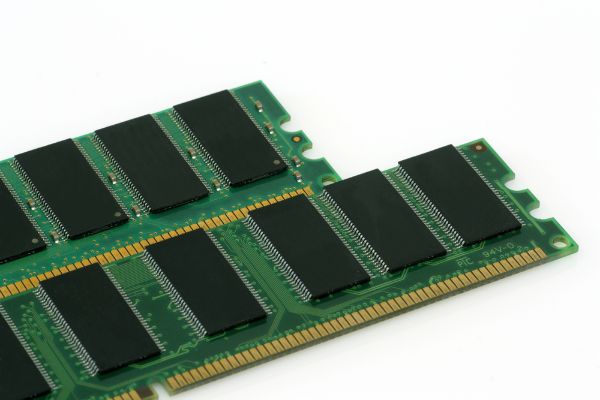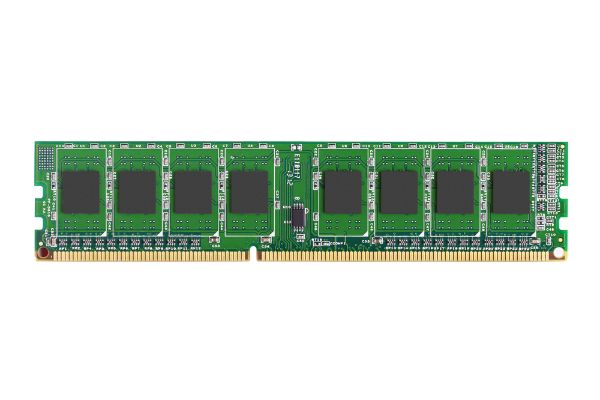Disclaimer: This post may contain affiliate links, meaning we get a small commission if you make a purchase through our links, at no cost to you. For more information, please visit our Disclaimer Page.
If you think of your computer’s central processing unit as the brain, the RAM would be the part of its brain that stores information that it might need to pull up later. You can store a lot of data on the hard drive, and that component is more akin to long-term memory.
Random-access memory acts more like short-term memory, and various processes that the device uses might store information in the RAM as a way to pull it up more quickly. As you might expect, this makes it easier and faster for some applications to perform various functions, resulting in a smoother experience for you as the user.
These are the basics of RAM, but it also exists as removable media that you can swap out or add to when necessary. If you decide to do this, there might be a few things you need to know in order to complete the process. Furthermore, there can be a right way and a wrong way to install RAM.
We can take you through what to do once you install new RAM, how to make sure you do it properly, why you might run RAM at the top speeds that some of your hardware can handle, and what might happen if you do increase those speeds.
Table of Contents
What Do I Do After Installing a New RAM?
If you’ve installed new RAM sticks properly, you shouldn’t need to do much of anything else after you close everything up and put the system back together.
Once you restart your computer the next time, the system should find the increased or new RAM and start using it instantly. You can always check BIOS configurations to see that everything looks good. It is also here that you would make some adjustments to the RAM if necessary. One of the things you might look for is the existence of an XMP profile or similar configuration map.
The XMP profile is a way for you to alter how memory in the computer functions. It changes various settings easily by allowing you to select a different profile that already has certain settings enabled or disabled to produce particular results.
Although this feature was developed by people at Intel originally, it is something that you can find on all kinds of memory from high-end manufacturers.
Most of the time, memory that can make use of an XMP profile will be listed as high-performance RAM. Mainly, the different settings on the profiles can help to determine this, and RAM that comes with XMP profiles may run at higher speeds than other types. You can read about the different kinds of profiles and how they work before you implement one.
While you don’t really need to do anything beyond this, you may want to install some software that can help you manage your new RAM.
There are different builds out there, but you’ll find some common programs that allow you to see info on your CPU, how it is configured, and the speed or timing of your new RAM while it is running.
Furthermore, you may want to install a memory tester program. These applications will run diagnostics on new sticks of RAM, and they can help you determine if one or more of the sticks has defects that might create issues for you down the line.
What Happens if RAM Is Not Installed Properly?
There are a few things that can happen if you do not install RAM the way it should be seated. Some of these things might be relatively minor, but others can cause more significant problems.
In light of that, it is vital that you read up on how to prepare your system for removing old RAM and putting new sticks in properly. Make sure you know and follow all the recommended steps in order to avoid any complications later.
1. If you don’t install the RAM properly, the computer may run very slowly. Applications may fail to load or act sluggishly if they do manage to load. Using browsers for web searches and other things will become tedious as well.
2. During the installation, you may have produced an electrostatic discharge. This jolt could have burned out part of the motherboard, the RAM, or both, rendering them unusable and making some other parts of your hardware defunct. If this happens, you may need an entirely new board and more RAM.
3. Dust could interfere with seating the RAM, and it could cause issues similar to what we mentioned above when it comes to sluggishness. The whole operating system can be affected by RAM that isn’t seated correctly.
4. In more severe cases, RAM that isn’t properly inserted into the machine could burn out the motherboard or itself just from trying to run when you turn the system on. You would need to replace the board, but this burning out could also create a chain reaction that might deal damage to other components, too. It is best to check and double-check that the RAM is in the proper location and seated firmly before closing everything up.
Can I Run My RAM at Max Speed?
You might be able to run your RAM at max speed, but it depends on your rig. When you purchase new RAM, you will see the maximum speed for which it is rated. That means that you can run it at this speed without any issues cropping up.
In fact, it is probable that your RAM is going to start out at about half the speed of the maximum it can do when you first install it and start the system up. While this is not a given, it is pretty standard for RAM to run at half its available speed ratings until you change it manually.
This is where the XMP profiles we mentioned earlier come into play. When you start your system and get into the BIOS, you can select a profile that runs the RAM at a higher speed.
However, whether or not the RAM can do this isn’t dependent on just the memory itself. It also depends on the capabilities of your CPU or motherboard.
Both of these components can support RAM up to certain frequencies, and these frequencies should be measured in MHz on the packaging. If your central processing unit or motherboard both only support half of the maximum speed at which your new RAM can run, then its maximum speed is only going to be half of what it could be.
You can enable the highest or fastest XMP profile, but the RAM will still have a cap that is based around your other hardware.
How Do I Know if My RAM Is Running at Max Speed or the Right Speed?
One of the easiest ways to check on how your RAM is doing is to use one of the programs we mentioned earlier. Something like CPU-Z is easy to download and intuitive to use. It will show you a lot of data relating to your RAM. This will include readings on speeds, memory caches, data relating to graphics that the RAM might use, and more.
You can go through these lists to check the information displayed in the program against what you know about your RAM based on the manufacturer’s details.
Additionally, you should see that each stick of RAM you have has its own slot in the program, allowing you to see individual stats for each one in different windows. Similarly, you can also check the instructions for your motherboard to see about physical RAM configurations. Motherboard manufacturers have optimal setups for installing RAM into particular slots.
These things are based on how many sticks of RAM you have, so what is optimal can change based on this number. Making sure you’ve followed these instructions is one of the main ways to ensure that your RAM can run at the proper speed.
What Happens if You Use RAM With Higher Speed?
We touched on the CPU and motherboard being the two main components that can affect RAM speed, and this is what is meant when anyone talks about running RAM at higher speeds. For the most part, nothing much should happen if you run RAM at higher speeds that your equipment can support.
Assuming that the RAM itself is compatible with your motherboard, it will recognize the memory. However, it will not run the RAM at its top speed unless the board and the CPU can support that speed.
However, it is also possible that RAM of this type could put extra strain on the CPU. While this isn’t a big deal in the short term, there is a possibility that it could shorten the overall lifespan of your processor. To avoid this, you should make sure that the XMP profile doesn’t even try to run the RAM at a higher speed than the CPU or motherboard can support.
Additionally, make sure the type of RAM you choose is compatible with the type of motherboard in your computer. For example, don’t try to put DDR4 RAM in a board that is only rated to handle DDR3.
Conclusion
Adding new RAM to your computer can breathe additional life into the device. Response and processing times can seem much faster, and many programs will run more smoothly. However, it is important to install everything properly to avoid damage.
Even with the correct setup, some RAM speeds will be curtailed by the limitations of your hardware. Be sure that everything is compatible before you attempt to make the swap.


